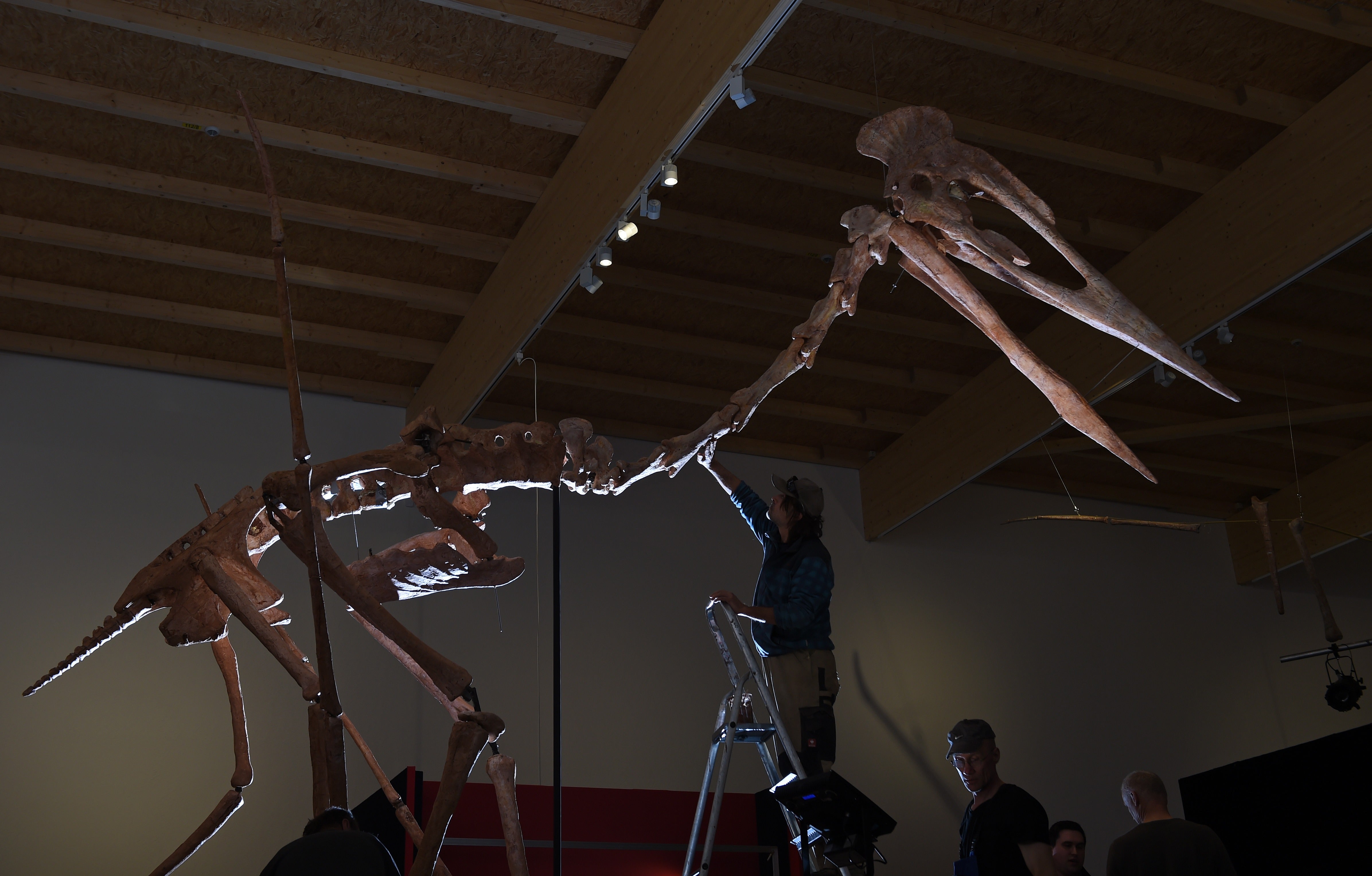Experts solve riddle of how pterosaurs flew with ‘ridiculously’ long necks
Analysis reveals kind of bone structure never before seen in animal kingdom

Scientists have unravelled the long-standing mystery of how the pterosaur, a gigantic flying reptile with a neck longer than that of a giraffe, could still take flight while also being capable of capturing and carrying prey.
According to the research, published in the journal iScience, the thin neck vertebrae of these dinosaur cousins got their strength from a complex internal bone structure that has never been seen before in the animal kingdom.
“One of our most important findings is the arrangement of cross-struts within the vertebral centrum,” explained Dave Martill, a co-author of the research from the University of Portsmouth in the UK.
With wingspans ranging from 1 metre to “possibly as high as 12 metres”, evidence suggests that pterosaurs soared through Earth’s skies from the Late Triassic period about 225 million years ago until the end of the Cretaceous period, about 66 million years ago.
Experts had long sought to understand how the thin-walled bones in these flying reptiles, needed to reduce weight, managed to support their bodies and allowed them to capture and eat heavy prey.
Now, CT scans of intact pterosaur remains discovered in Morocco have helped solve parts of this puzzle.
“These animals have ridiculously long necks. It makes a giraffe look perfectly normal,” Caraid Williams, another co-author of the study, said in a statement.
“We wanted to know a bit about how this incredibly long neck functioned, as it seems to have very little mobility between each vertebra,” Williams added.
The scientists found that some sections of the reptile’s spine were arranged in a helix traveling up and down the vertebral tube and “crossing each other like bicycle wheel spokes.”
With the help of engineers, the team found that just 50 of these spoke-like parts of the vertebra increased the amount of weight their necks could carry without buckling by as much as 90 per cent.
“It appears that this structure of extremely thin cervical vertebrae and added helically arranged cross-struts resolved many concerns about the biomechanics of how these creatures were able to support massive heads – longer than 1.5 metres – on necks longer than the modern-day giraffe, all whilst retaining the ability of powered flight,” Martill added.
While pterosaurs are sometimes thought of as evolutionary dead-ends, the findings reveal that these giant reptiles had “fantastically complex and sophisticated” biology, with extremely light yet strong and durable bones.
Join our commenting forum
Join thought-provoking conversations, follow other Independent readers and see their replies
Comments
Bookmark popover
Removed from bookmarks